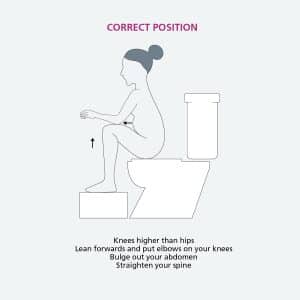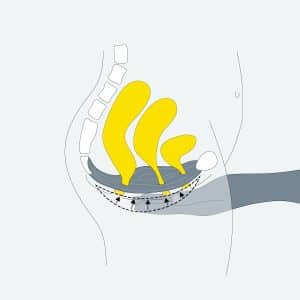Pelvic floor exercises
- It is essential you start pelvic floor exercises as soon as possible after you have had your baby.
- You can start your pelvic floor exercises after you have gone for your first wee and your bladder is working. If you have a catheter in, wait until this has been removed and you have been able to wee normally.
- Even if you have stitches you should still start doing pelvic floor exercises as soon as possible as it will help with healing and discomfort
- To find out more information about the benefits of pelvic floor exercises and how to do them please watch this video:
Toileting
- If you have had an episiotomy (cut) or tear, try to gently clean the area with water and avoid perfumed products
- Change your sanitary towel regularly to reduce the risk of infection
- If your pain persists or increases, or you notice an offensive-smelling discharge please contact your midwife or GP
Bladder
- If you are unable to pass urine or feel like your bladder is not completely emptying, please contact your GP
- It is important to ensure you drink enough after your delivery. Aim for approximately 1.5 to 2 litres per day (you may need to drink more if you are breastfeeding)
- Try to avoid caffeinated drinks, fizzy drinks, and alcohol as these may irritate your bladder and cause urgency
- Try to avoid going to the toilet ‘just in case’ even if you have a fear of leaking
Bowels
It is important to avoid constipation after your delivery as this puts extra strain on your pelvic floor muscles. To prevent constipation, make sure you drink plenty of fluid, increase the fibre content in your diet. You may also be prescribed some laxatives whilst you are in hospital.
To help you open your bowels:
- Sit on the toilet with a stool under your feet
- Your knees should be higher than your hips
- Lean forward and put your elbows on your knees
- Buldge out your abdomen
- Straighten your spine
- Do not strain and keep your tummy muscles relaxed
Do not strain and keep your tummy muscles relaxed. It is helpful to take a slow breath in through your nose so that your stomach moves outwards, and your chest remains still and then exhale through pursed lips.
You may also find it useful to support your perineum when opening your bowels. Your perineum is the area between your back passage and your vagina.


At home
It is important to rest after your delivery to help you recover. When you feel able, gradually build up your activities levels as pain allows.